Published Alex Hodgson on December 7, 2018
Part 3: Taking the New GC-VUV Jet Fuels Method for a Test Flight
Having a shiny new VUV spectral library for jet fuel is all well and good, but to really put it through its paces, we need to analyze some actual jet fuel samples to get an idea of where we stand. In this final part of Flying at the Speed of (Ultraviolet) Light, we’ll look at preliminary data from a few proficiency test fuels and evaluate where GC-VUV stands.
The setup for GC-VUV jet fuel analysis, including the 30m x 0.25mm x 0.25µm Rxi-1ms GC column, is conveniently the same as for gasoline in ASTM D8071. However, because we’re not concerned with speciating compounds like in D8071, we can crank up the carrier gas flow rate (2 mL/min helium) and oven temperature program profile (50°C, hold 0.1 min; 15°C/min to 260°C) to do the whole analysis in 14 minutes! We increased the VGA-100 acquisition rate from 4 to 7 spectra per second to properly capture the compressed run (Figure 1). VUV Analyze™ is still being utilized for TID analysis in a simple, automated, 2-minute quantitation.
We analyzed 7 proficiency test fuels from ASTM and AITF (Alberta Innovates – Technology Futures) with GC-VUV. For the D1319 equivalency all the data for total saturates, olefins, and aromatics compare very well, with all values falling within 3 standard deviations of the average (Tables 1-3). Saturates and olefins seem to be biasing high for GC-VUV, whereas aromatics are biasing low. Again, these analyses are a work in progress as we dial in response factors and densities (for which there is surprisingly little data) for the higher carbon numbers and work on limiting the olefin matching. We feel these preliminary results are representative of the analytical power that GC-VUV offers.
Table 4 shows the D1840 equivalency for di-aromatics; while GC-VUV falls out of the range for most of these samples, bear in mind the low absolute magnitude of the values. Also, if you recall from Part 1, D1840 is looking at a relatively low absorbing region of the di-aromatic spectra as compared to VUV. This, combined with VUV’s power for spectral deconvolution of di-aromatics from mono-aromatics and saturates, suggests the possibility we’re getting a more accurate view of the di-aromatics in these complex samples with GC-VUV.
A small repeatability study was also run with 6 samples from ASTM, AITF, and SWRI (Southwest Research Institute), as shown in Table 5. These samples were chosen because they were the high and low values for saturate, olefin, and aromatic content. In particular, the %RSDs for all aromatics fell below 0.5%; the di-aromatics were all below 5%, with 5 of the 6 below 1.5%.
In the race to be the next gold standard for jet fuels analysis, GC-VUV has certainly hit the ground running. While we haven’t quite reached the finish line, it’s in our sights. I daresay the industry is ready for a jump to the 21st century, so stay tuned for more updates from the ASTM D02 Committee Meeting coming up next week in Atlanta!
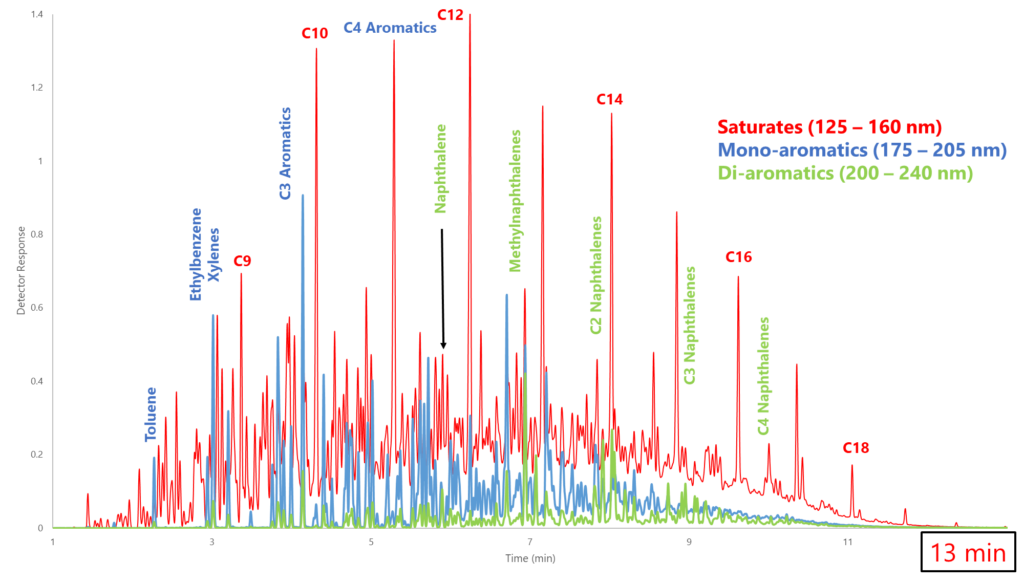
Figure 1. A 14-minute jet fuel GC-VUV run. Each spectral filter encompasses the λmax of its respective class, which helps us visualize the general class breakdown for the sample.
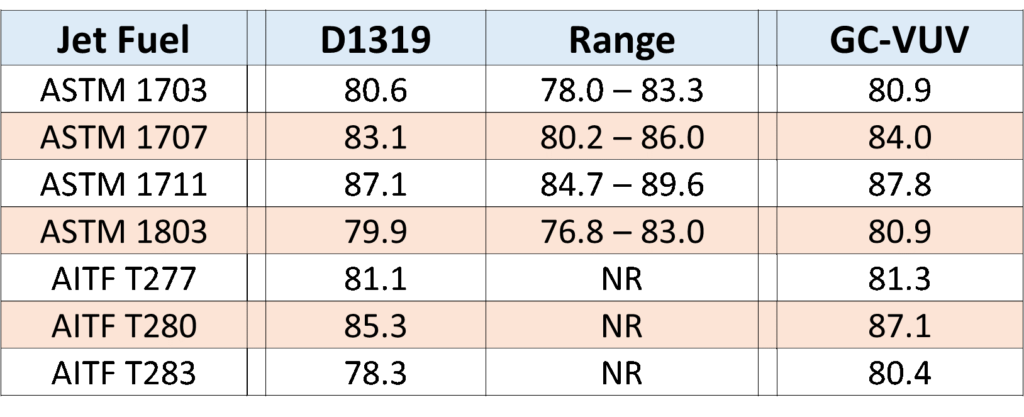
Table 1. Comparison of ASTM D1319 and GC-VUV for total saturates. Range represents the ILS average ± 3σ. All values are in volume %. NR is “not reported”.
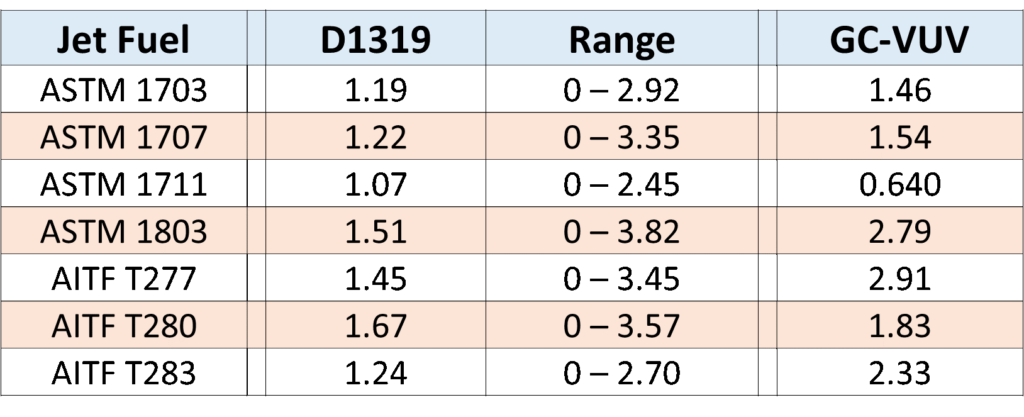
Table 2. Comparison of ASTM D1319 and GC-VUV for total olefins. Range represents the ILS average ± 3σ. All values are in volume %.
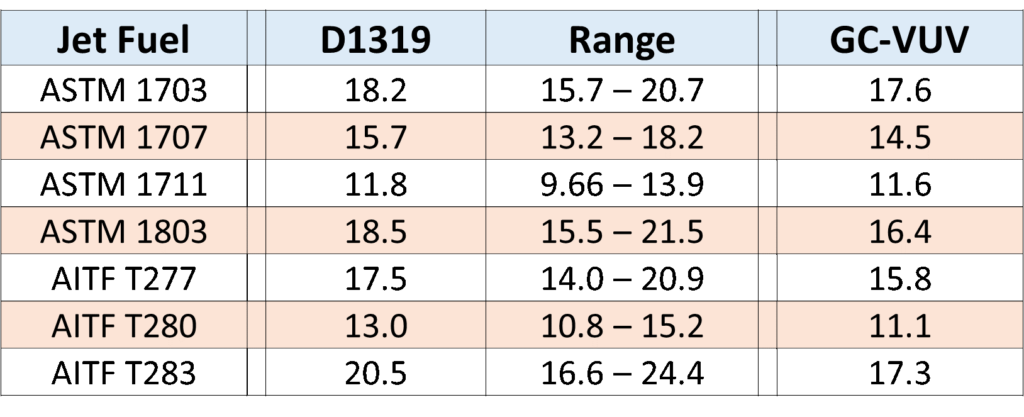
Table 3. Comparison of ASTM D1319 and GC-VUV for total aromatics. Range represents the ILS average ± 3σ. All values are in volume %.
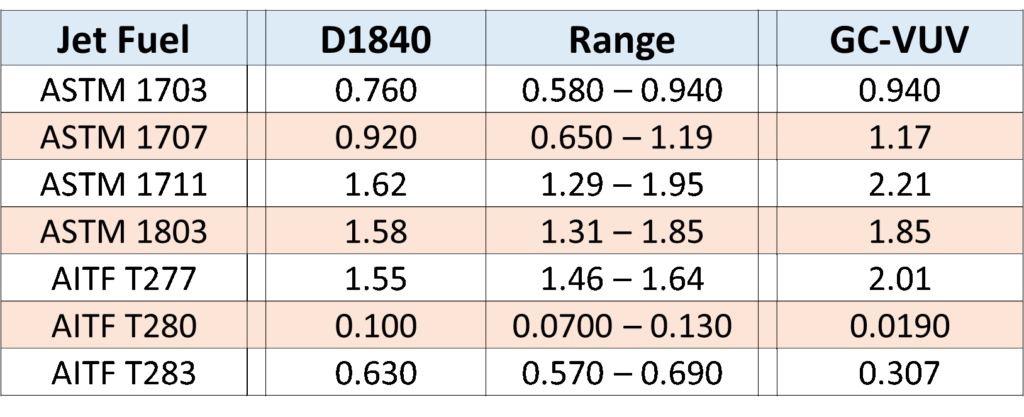
Table 4. Comparison of ASTM D1840 and GC-VUV for total di-aromatics. Range represents the ILS average ± 3σ. All values are in volume %.
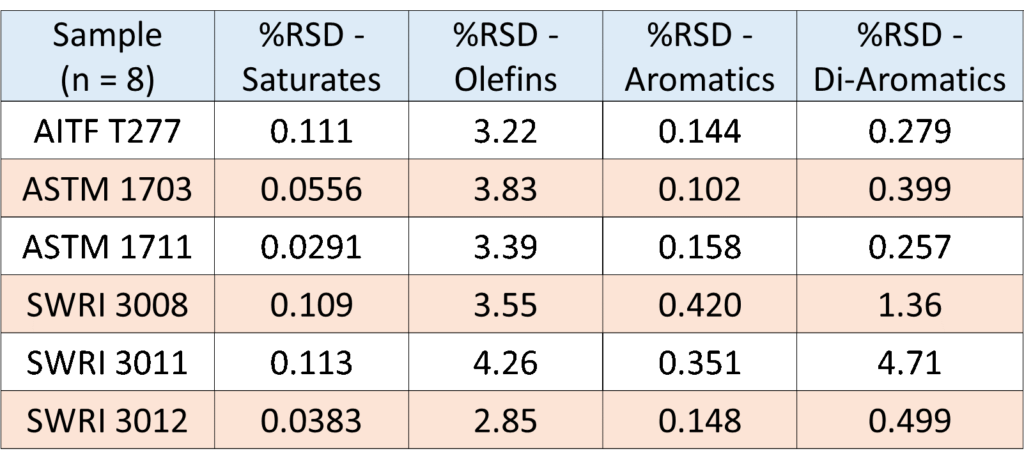
Table 5. This precision study on GC-VUV for 6 jet fuels yielded low %RSDs for all classes, but especially for the aromatics which are all less than 0.5%!



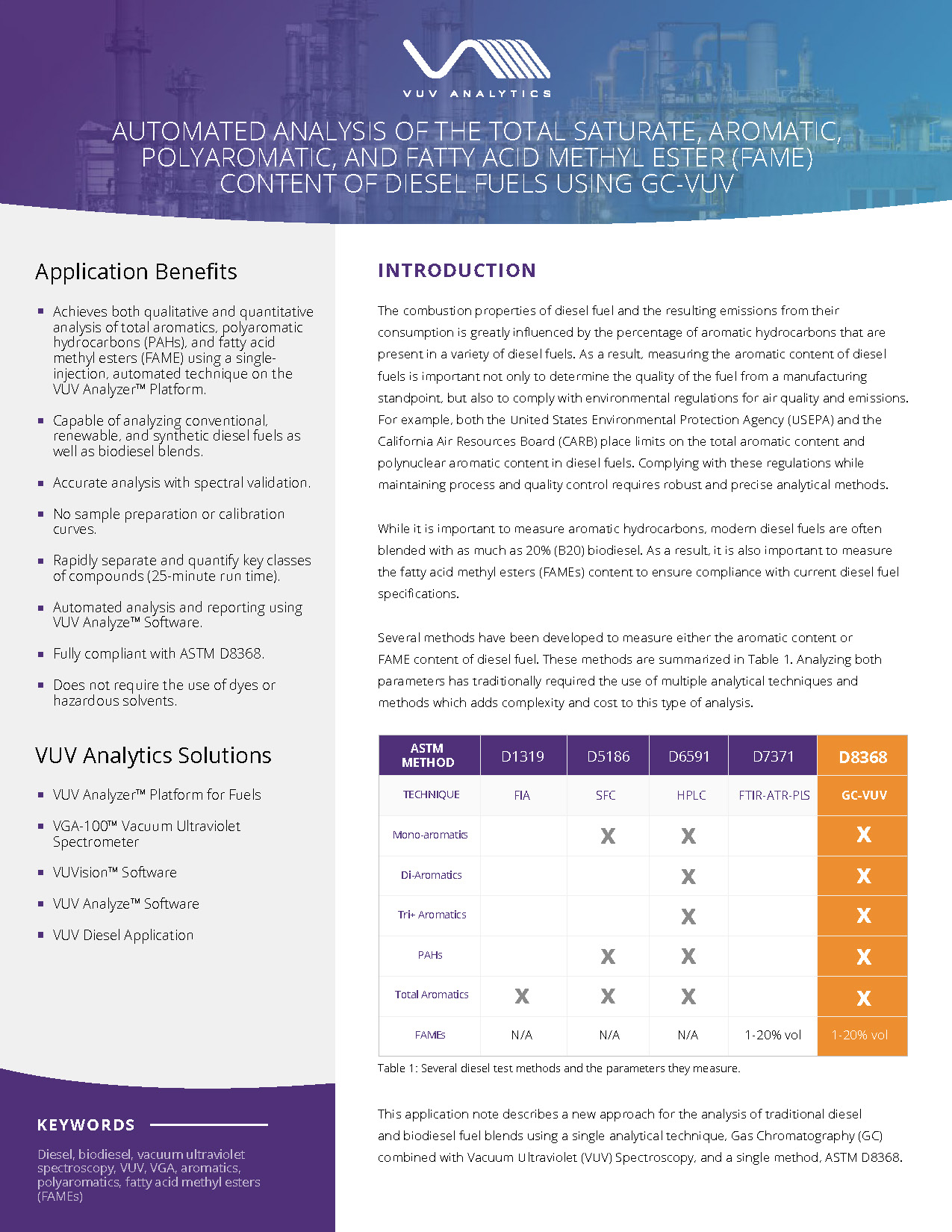
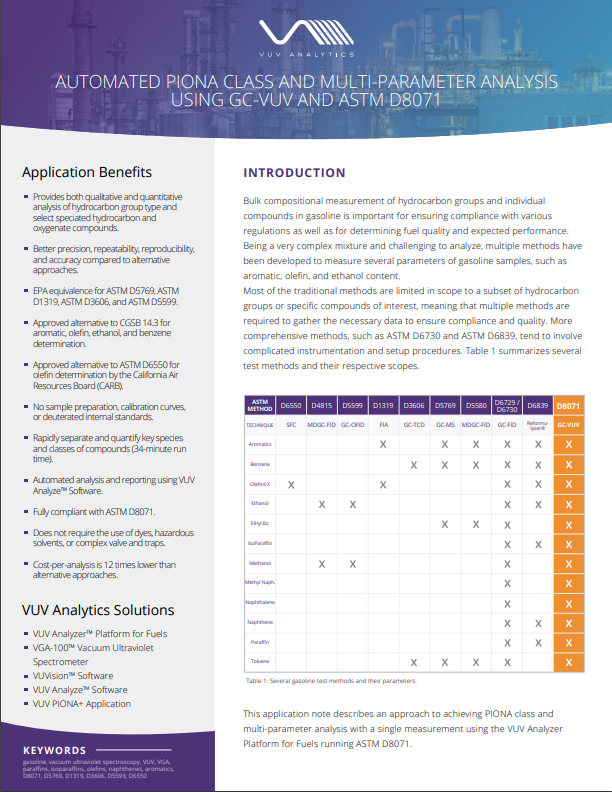





Leave a Reply